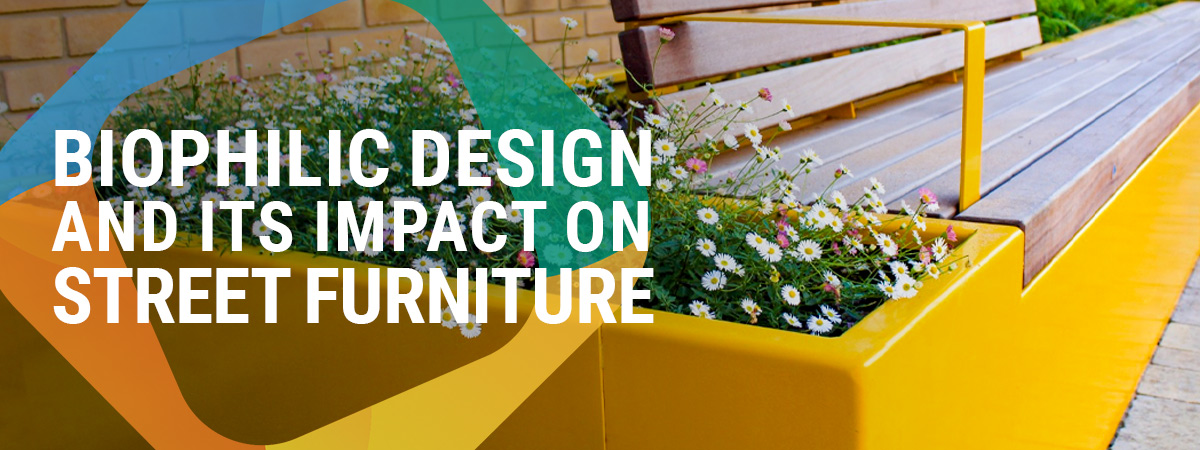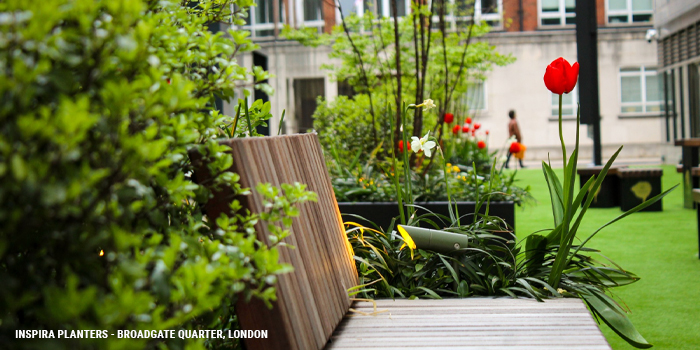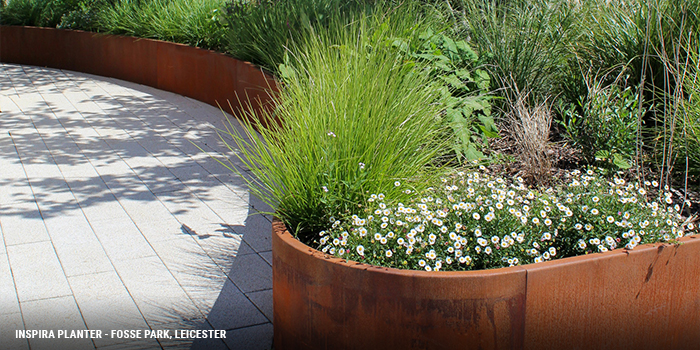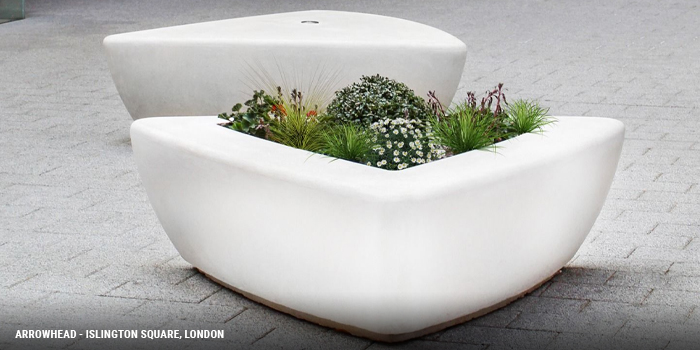Biophilic design and its impact on street furniture

Biophilic design is transforming the way urban spaces are designed. It is a concept that seeks to connect people and nature within built environments.
It is an approach that is not only affecting how buildings are designed but also areas within an urban environment, particularly town or city centres.
Biophilic design is a response to the fact that the population across the UK, as well as the rest of the world, is increasingly living in built-up areas. According to the UK Government's Trend Deck on Urbanisation (2021), the greatest rate of population increase within England was found in urban areas - a 6.2% increase between 2011 and 2019.
A total of 56.3 million people lived in urban areas, which makes up 82.9% of England’s population.

However, scientific studies have shown that it is a connection to nature that helps humans’ mental health. And adversely, a lack of connection to nature is detrimental to humans’ mental health.
For sub-contractors, understanding the principles of biophilic design and its impact on street furniture is essential to stay ahead in the competitive market.
Principles of biophilic design
Biophilic design is an architectural concept that integrates nature and natural elements into modern built environments. It is based on the idea that humans have an innate connection to nature, and this connection can be nurtured through design.
It has three core principles:
Direct connection to nature: Incorporating and harnessing natural light, water, plants, and other natural elements.
Indirect connection to nature: Using natural materials, colours, shapes, and patterns that evoke nature.
Human-nature relationship: Creating spaces that foster interaction and engagement with nature.
Impact on Street Furniture Designs
The principles of biophilic design are shaping street furniture in several ways:
Aesthetics and integration with landscape - Street furniture is being designed to blend seamlessly with the surrounding landscape. This includes integrating planters, lighting, and tree protection products that not only introduce natural elements but protect natural elements, enhancing the overall aesthetic of an urban area.

By integrating planters into urban landscapes, we can create greener, more vibrant, and healthier spaces that foster well-being.
Form and functionality - The design of street furniture is evolving to mimic natural forms and patterns. Curved lines, organic shapes, and multifunctional designs encourage social interaction.
Material choices - Biophilic street furniture often uses sustainable and natural materials like timber, stone, and recycled metals.
These materials benefit an urban environment with a more organic and natural appearance and texture. Timber, for example, is a popular material for benches, planters, litter bins and picnic tables due to its earthy appearance and durable properties.

Accessibility and Inclusivity - Biophilic design promotes inclusivity by creating spaces that are accessible and appealing to all.
By creating street furniture from natural materials e.g. timber and stone, it appeals to a wide range of age groups and abilities and is a reflection of the human-nature relationship principle of biophilic design.
Biophilic design and street furniture
Biophilic design is more than a design trend, it is a philosophy that recognises the vital connection between humans and nature. It has an ever-increasing influence on architectural designs and construction projects.
For sub-contractors, embracing this approach in street furniture selection can lead to greater project success with satisfied clients, as well as winning more work and developing closer relationships with main contractors.